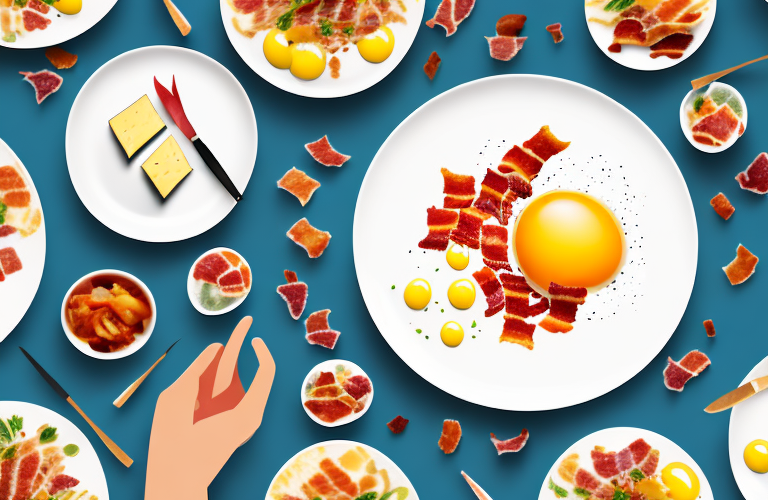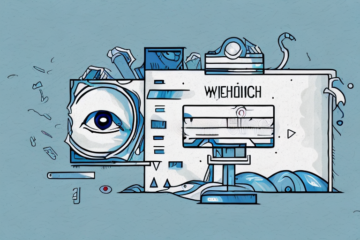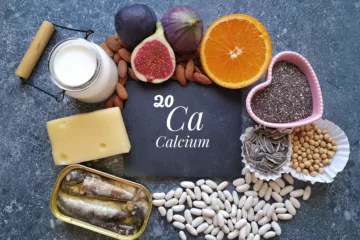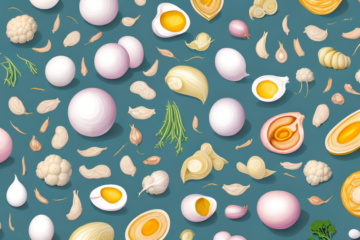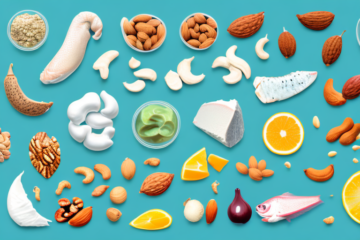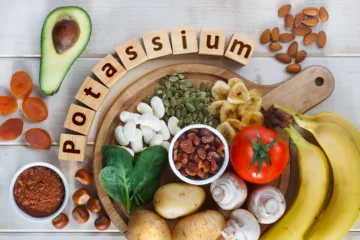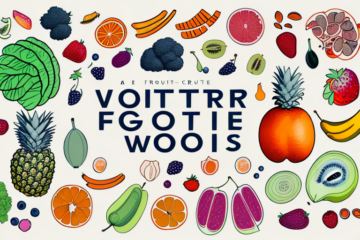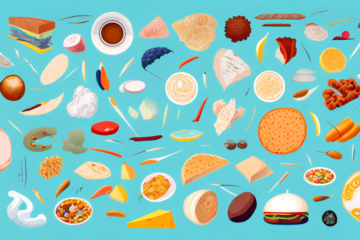If you have been advised to watch your cholesterol levels, you may be wondering what foods to avoid or limit. Cholesterol has been linked to cardiovascular diseases, and it is essential to maintain healthy levels for overall well-being. In this article, we’ll explore what cholesterol is, the different types of cholesterol, and the role of diet in cholesterol levels. We’ll also look at common foods that contain high levels of cholesterol and surprising foods that may raise your cholesterol levels.
What Is Cholesterol And How Does It Affect Our Health?
Cholesterol is a waxy, fat-like substance present in all body cells. The liver produces cholesterol, but we also get it from food. Our bodies require cholesterol to build healthy cells and produce hormones, vitamin D, and bile acids that help digest fat. However, an excessive amount of cholesterol in the blood can increase the risk of heart disease and stroke.
There are two types of cholesterol: low-density lipoprotein (LDL) and high-density lipoprotein (HDL). LDL is often referred to as “bad” cholesterol because it can build up in the walls of arteries, leading to blockages and increasing the risk of heart disease. HDL, on the other hand, is known as “good” cholesterol because it helps remove LDL from the bloodstream.
There are several lifestyle changes that can help manage cholesterol levels, such as maintaining a healthy diet, exercising regularly, quitting smoking, and managing stress. In some cases, medication may also be necessary to lower cholesterol levels and reduce the risk of heart disease and stroke.
The Different Types Of Cholesterol
There are two types of cholesterol: low-density lipoprotein (LDL) and high-density lipoprotein (HDL). LDL cholesterol is often referred to as “bad” cholesterol since it can build up in the arteries and increase the risk of heart disease. On the other hand, HDL cholesterol is known as “good” cholesterol and helps to remove LDL particles from the bloodstream.
It is important to note that not all LDL cholesterol is created equal. There are different sizes and densities of LDL particles, and the smaller, denser particles are actually more harmful than the larger ones. This is because they can more easily penetrate the walls of the arteries and cause damage.
In addition to LDL and HDL cholesterol, there is also a third type called very low-density lipoprotein (VLDL) cholesterol. VLDL cholesterol is responsible for carrying triglycerides, a type of fat, in the bloodstream. High levels of VLDL cholesterol can also increase the risk of heart disease.
The Role Of Diet In Cholesterol Levels
Your diet highly influences your cholesterol levels. Foods high in saturated and trans fats can raise LDL cholesterol levels, while foods rich in fiber, fruits, and vegetables can help to lower it. To maintain healthy cholesterol levels, you should strive to consume a healthy diet, rich in fresh produce, lean protein, and healthy fats like olive oil and avocados.
In addition to making dietary changes, regular exercise can also help to improve cholesterol levels. Exercise can help to increase HDL cholesterol, which is the “good” cholesterol that helps to remove LDL cholesterol from the bloodstream. Aim for at least 30 minutes of moderate-intensity exercise most days of the week.
If you have high cholesterol levels, your doctor may recommend medication in addition to lifestyle changes. Statins are a common type of medication used to lower cholesterol levels. It’s important to follow your doctor’s instructions and take any prescribed medication as directed.
Common Foods That Contain High Levels Of Cholesterol
Many common foods contain high levels of cholesterol, including:
- Red meat
- Sausage and bacon
- Egg yolks
- Full-fat dairy products like cheese and butter
- Shellfish
If you’re trying to watch your cholesterol, you should limit your intake of these foods. Instead, opt for lean protein sources like skinless chicken breasts, beans, and lentils.
It’s important to note that not all cholesterol is bad for you. High-density lipoprotein (HDL) cholesterol, also known as “good” cholesterol, can actually help protect against heart disease. Foods that can help increase your HDL cholesterol levels include:
- Fatty fish like salmon and tuna
- Nuts and seeds
- Avocado
- Olive oil
- Whole grains
In addition to making dietary changes, regular exercise and maintaining a healthy weight can also help improve your cholesterol levels.
If you have concerns about your cholesterol levels, it’s important to speak with your healthcare provider to determine the best course of action for you.
Surprising Foods That May Raise Your Cholesterol Levels
It’s not just the obvious sources of high cholesterol that you need to watch out for. Some foods that you may not assume as high in cholesterol include:
- Processed foods like cookies, crackers, and baked goods
- Fast food
- Margarine
These foods are often high in trans fats, which can increase LDL cholesterol levels and lower HDL cholesterol levels. Be sure to read nutrition labels carefully before consuming packaged or processed foods.
In addition to processed foods, fast food, and margarine, there are other surprising foods that may raise your cholesterol levels. These include:
- Red meat
- Full-fat dairy products like cheese and butter
- Egg yolks
While these foods can be part of a healthy diet in moderation, it’s important to be mindful of your intake and choose lower-fat options when possible. Incorporating more fruits, vegetables, and whole grains into your diet can also help lower cholesterol levels.
How To Read Nutrition Labels To Identify High-Cholesterol Foods
Nutrition labels are an essential tool in helping you to identify high-cholesterol foods. When reading labels, look for the amount of cholesterol per serving size, and keep an eye on the percentage daily value. The daily value for cholesterol is 300mg or less per day. However, if you have high cholesterol levels or heart disease, you should aim for less than 200mg per day.
It’s important to note that not all cholesterol is bad for you. High-density lipoprotein (HDL) cholesterol is considered “good” cholesterol, as it helps to remove low-density lipoprotein (LDL) cholesterol from your bloodstream. When reading nutrition labels, look for foods that are high in HDL cholesterol, such as nuts, seeds, and fatty fish.
In addition to checking the cholesterol content, it’s also important to pay attention to the other nutrients listed on the label. Foods that are high in saturated and trans fats can also contribute to high cholesterol levels. Look for foods that are low in these types of fats and high in fiber, which can help to lower cholesterol levels.
The Connection Between Saturated And Trans Fats And High Cholesterol
Saturated and trans fats are the two main types of dietary fats that increase bad cholesterol levels. Saturated fats are typically found in animal products like butter, cheese, and fatty meats, while trans fats are often present in processed foods like cookies, crackers, and fast food. To maintain healthy cholesterol levels, aim to limit your consumption of these types of fats, opting instead for healthy fat sources like olive oil and nuts.
It’s important to note that not all fats are bad for you. In fact, some types of fats can actually help improve cholesterol levels. Monounsaturated and polyunsaturated fats, found in foods like avocados, salmon, and nuts, can help raise good cholesterol levels and lower bad cholesterol levels. Incorporating these healthy fats into your diet can have a positive impact on your overall cholesterol levels and heart health.
Plant-Based Foods That May Help Lower Cholesterol Levels
Adding more plant-based foods to your diet can help to lower cholesterol levels. Foods that may help to lower cholesterol include:
- Oats and oat bran
- Fruits like apples, bananas, and citrus fruits
- Vegetables like broccoli, Brussels sprouts, and kale
- Nuts and nut butter
- Legumes like lentils and chickpeas
Increasing these foods in your diet, while also reducing your intake of high-cholesterol foods, may help to regulate your cholesterol levels.
It’s important to note that not all plant-based foods are created equal when it comes to lowering cholesterol. Some plant-based foods, like coconut oil and palm oil, are high in saturated fat and can actually raise cholesterol levels. It’s important to choose plant-based foods that are low in saturated fat and high in fiber, like the ones listed above, for optimal cholesterol-lowering benefits.
The Benefits Of A Low-Cholesterol Diet For Heart Health
Maintaining healthy cholesterol levels has numerous benefits for overall health, particularly heart health. Studies have shown that a healthy diet low in saturated and trans fats and high in fruits, vegetables, and whole grains can help to prevent heart disease and stroke.
In addition to reducing the risk of heart disease and stroke, a low-cholesterol diet can also improve blood pressure and reduce inflammation in the body. High cholesterol levels can cause plaque buildup in the arteries, which can lead to high blood pressure and inflammation. By reducing cholesterol levels through diet, individuals can improve their overall cardiovascular health.
Furthermore, a low-cholesterol diet can also have positive effects on weight management and diabetes prevention. Foods that are high in cholesterol are often high in calories and can contribute to weight gain. By choosing a diet that is low in cholesterol, individuals can also reduce their calorie intake and maintain a healthy weight. Additionally, a diet high in fruits, vegetables, and whole grains can help to regulate blood sugar levels and reduce the risk of developing type 2 diabetes.
Lifestyle Changes To Consider For Lowering Your Cholesterol
The food you eat isn’t the only factor that affects cholesterol levels. Lifestyle changes that may help to lower your cholesterol levels include:
- Exercising regularly
- Maintaining a healthy weight
- Quitting smoking
- Reducing stress
Incorporating these changes into your lifestyle can help to improve your overall well-being, in addition to regulating your cholesterol levels.
It’s important to note that some people may require medication in addition to lifestyle changes to manage their cholesterol levels. It’s best to consult with a healthcare professional to determine the best course of action for your individual needs.
Medications And Supplements For Managing High Cholesterol
If lifestyle changes alone do not sufficiently lower your cholesterol levels, your doctor may prescribe medications like statins, which work to regulate cholesterol production in the liver. Additionally, some supplements like niacin and plant sterols may help to regulate cholesterol levels, but always speak with your doctor before starting any supplements.
It is important to note that while medications and supplements can be effective in managing high cholesterol, they may also come with potential side effects. Statins, for example, can cause muscle pain and liver damage in some individuals. It is important to discuss any potential side effects with your doctor and to report any symptoms that may arise while taking these medications.
In addition to medications and supplements, there are also alternative therapies that may help to lower cholesterol levels. These include acupuncture, yoga, and meditation. While more research is needed to fully understand the effectiveness of these therapies, they may be worth exploring as a complementary approach to managing high cholesterol.
Myth-Busting: Separating Fact From Fiction About Cholesterol
There are many myths about cholesterol that circulate online and in popular media. Some of the most prevalent ones include that eating eggs or shrimp will significantly raise your cholesterol levels or that all cholesterol is bad for you. However, these claims are not entirely accurate, and it’s essential to separate fact from fiction when it comes to managing your cholesterol levels.
One important fact to keep in mind is that not all cholesterol is created equal. There are two types of cholesterol: LDL (low-density lipoprotein) and HDL (high-density lipoprotein). LDL is often referred to as “bad” cholesterol because it can build up in your arteries and increase your risk of heart disease. On the other hand, HDL is known as “good” cholesterol because it helps remove LDL from your bloodstream. So, while it’s important to manage your overall cholesterol levels, it’s equally important to pay attention to the ratio of LDL to HDL in your body.
Tips For Making Healthy, Low-Cholesterol Meal Choices
Making healthy, low-cholesterol meal choices can be challenging, but with a bit of creativity, it’s possible to enjoy a variety of delicious meals. Some tips for making healthy choices include:
- Choosing lean protein sources like fish, chicken, and beans
- Using healthier cooking methods like grilling or baking instead of frying
- Incorporating more fruits, vegetables, and whole grains into your meals
- Limiting your intake of high-cholesterol foods like red meat, cheese, and processed foods
By following these tips and keeping your cholesterol levels in check, you can improve your overall well-being and reduce your risk of heart disease and stroke.
Overall, understanding which foods contain high levels of cholesterol and how to manage your levels can significantly impact your heart health and overall well-being. By incorporating healthy lifestyle changes and making informed dietary choices, you can successfully regulate your cholesterol levels and lead a healthy, balanced life.
Another important tip for making healthy, low-cholesterol meal choices is to read food labels carefully. Many packaged foods contain hidden sources of cholesterol, such as hydrogenated oils and trans fats. By checking the labels and choosing products with lower levels of saturated and trans fats, you can make healthier choices and reduce your cholesterol intake.
It’s also important to remember that healthy eating doesn’t have to be boring or tasteless. Experiment with new recipes and flavors to keep your meals interesting and satisfying. Try using herbs and spices to add flavor instead of salt, and swap out high-fat ingredients for healthier alternatives. With a little creativity and planning, you can enjoy delicious, heart-healthy meals every day.

